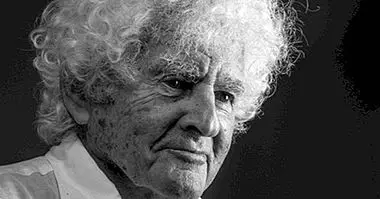Narcolepsy: types, causes, symptoms and treatment
Among sleep disorders the case of narcolepsy is especially striking due to the specificity of its symptoms, caused by biological factors and related to alterations in sleep and wakefulness.
Next we will analyze the nature of narcolepsy, the types in which it is divided, the most recent discoveries about this disease and the most effective treatments to combat its symptoms.
- Related article: "The 7 main sleep disorders"
What is narcolepsy?
Narcolepsy, also known as "Gélineau syndrome" , is a neurological disorder of sleep that produces an excess of daytime sleepiness, as well as other symptoms associated with alterations in sleep rhythms.
The term 'narcolepsy' was coined by Jean-Baptiste-Édouard Gélineau, who described this syndrome for the first time in 1880. It comes from the Greek words 'narkē' and 'lepsis' and can be translated as 'sleep attack'.
Normally detected between 7 and 25 years , although some subtypes of narcolepsy have a later onset. It occurs in approximately 0.1% of the population, being equally common in women and men.
This disorder can interfere in a very significant way in the life of those who suffer it: not only are they affected at a professional level by hypersomnolence and are usually seen as lazy people by their social environments, but there is a greater risk of suffering falls and traffic accidents or other.
- Maybe you're interested: "7 psychological signals that indicate you're not getting enough sleep"
Symptoms and signs
According to the DSM-5 manual, the fundamental symptom of narcolepsy are the sudden accesses of sleep that occur during the day even if the person has slept properly, especially after copious meals, stress or intense emotions. To make the diagnosis it is necessary that these episodes have occurred three times a week during the three previous months.
In addition to the 'sleep attacks' the presence of cataplexy is required , a deficit in the hormone orexin or an alteration in the phases of sleep, particularly REM or REM (rapid eye movement sleep); For example, there are more movements and awakenings during the night.
Cataplexy or cataplexy is a specific symptom of narcolepsy, which consists of episodes of loss of muscle tone throughout the body, which can lead to falls. Cataplexy is usually triggered by strong emotions such as fear, laughter or crying, and when it occurs, the person maintains consciousness even though he has difficulty speaking and his vision is blurred.
Orexin, or hypocretin, is involved in the alert and in the wake , as well as in food intake. This hormone is secreted by the hypothalamus. In many cases of narcolepsy a low concentration of hypocretin is detected in the cerebrospinal fluid.
In people with narcolepsy it is usual that the first REM sleep period appears 15-20 minutes after falling asleep , whereas under normal conditions the REM phase does not appear until an hour and a half passes. Sleep disturbances are analyzed by nocturnal polysomnography and the multiple sleep latency test, which assesses the ability of the person to fall asleep.
The narcoleptic tetrad
Before the biological bases of narcolepsy were well known, it was usually diagnosed based on four symptoms that were considered cardinal: daytime hypersomnolence, cataplexy, hypnagogic hallucinations and sleep paralysis .
Hypnagogic hallucinations and sleep paralysis are nonpathological phenomena that occur in the transition between wakefulness and sleep. In people with narcolepsy they occur more frequently and, like cataplexy, are related to REM phase intrusions.
When we are about to fall asleep many times we see incomplete and static images and we hear sounds like buzzing or fragments of dialogue, similar to the phenomena that occur during dreams; these are the hypnagogic hallucinations. There are also hypnopompics, which occur when going from sleep to wakefulness.
On the other hand, the paralysis of sleep can occur when we fall asleep or when we wake up and it is characterized by the sensation of being awake but without the ability to move or emit sounds. It is an anxious experience , partly because during REM sleep the breathing is fast and shallow, which causes the person to feel as if they are suffocating.
Only one in four people with narcolepsy present simultaneously all the symptoms of the narcoleptic tetrad.Hypersomnolence is usually the first symptom and persists throughout life, while REM sleep intrusions may disappear over time.
Causes of this disorder
Narcolepsy is a disease of genetic origin with a hereditary component : between 10 and 20% of narcoleptic people have at least one first-degree relative who also has the disorder. However, given the variability of the cases, it has not been possible to determine a single cause.
Non-genetic factors may also be relevant in the development of secondary narcolepsy, for example, brain injuries, infections, contact with pesticides, hormonal changes, stress or certain types of diet.
This disorder has been related mainly to a genetic alteration in the chromosomes that determine HLA antigens (human leukocyte antigens), fundamental in the immune response.
In many cases of narcolepsy, low levels of the hormone hypocretin or orexin are observed in the cerebrospinal fluid. Orexin deficiency is more frequent in people with cataplexy and is usually due to the destruction of the hypothalamus neurons that produce it as a consequence of the genetic, biological and environmental factors mentioned previously. It is believed that this alteration is caused by an autoimmune reaction.
Types of narcolepsy
The DSM-5 describes different types of narcolepsy , categorizing them according to the biological signs and the underlying causes, as well as the associated symptoms.
In addition to the types defined below, the DSM-5 differentiates cases of narcolepsy in mild, moderate and severe depending on the frequency of cataplexy, the need for naps, the alteration of night sleep and the effectiveness of medications.
1. Without cataplexy and with hypocretin deficiency
In this subtype a deficiency of the hormone orexin and an alteration of the phases of sleep are confirmed but no episodes of cataplexy occur .
2. With cataplexy and without hypocretin deficiency
In contrast to the previous case, in addition to the REM alterations, cataplexy is produced but orexin levels in the cerebrospinal fluid are normal . It is an infrequent type that includes less than 5% of cases of narcolepsy.
3. Autosomal dominant cerebellar ataxia, deafness and narcolepsy
It is considered that the cause of this type of narcolepsy is a mutation of exon 21 of DNA. The beginning of these cases is late , normally occurring between 30 and 40 years.
The term "ataxia" refers to the lack of motor coordination , in this case caused by an alteration of the cerebellum. In addition to ataxia, deafness and narcolepsy, dementia usually develops in this subtype as the disease progresses.
4. Autosomal dominant narcolepsy, obesity and type 2 diabetes
This subtype is determined by a mutation of the oligodendrocytes , glial cells involved in the formation of myelin, a substance that increases the speed of nerve transmission. In these cases there is also a low concentration of hypocretin in the cerebrospinal fluid.
5. Secondary to another medical condition
In some cases, narcolepsy appears as direct consequence of tumors, traumas or infections (such as sarcoidosis or Whipple's disease) that destroy orexin-secreting cells.
Treatment of narcolepsy
Since narcolepsy is not curable, the treatment of this disorder is symptomatic . However, there are effective options to alleviate all symptoms, so many people with narcolepsy can lead a normal life.
Different drugs are used to control cataplexy: tricyclic antidepressants, modafinil, sodium oxybate, and selective serotonin and noradrenaline reuptake inhibitors, such as fluoxetine and venlafaxine, which also reduce hypnagogic hallucinations and sleep paralysis. .
Stimulant drugs such as modafinil and methylphenidate, known for its use in Attention Deficit Hyperactivity Disorder (ADHD), are effective in reducing drowsiness, although for the effect to be maintained it is usually necessary to progressively increase the dose; this carries a higher risk of side effects.
It has been suggested that the combination of stimulants and tricyclic antidepressants may be the most appropriate approach, although the treatment should be different depending on the person's specific symptoms.
Likewise there are treatments that focus on the hormone hipocretina , currently in the research phase. These include immunotherapy, gene therapy and the replacement of orexin.
Psychological interventions
Psychoeducational programs are very effective in the cases of narcolepsy. Specifically, it is advisable to transmit information and advice to the person diagnosed and to their family and professional environments to improve their functioning and well-being. Support groups can also be very useful for people with this problem.
Programming one, two or three naps 10-30 minutes during the day greatly relieves hypersomnolence and improves academic and work performance. This treatment is considered to be in an experimental phase, although the results are promising.
It is important too maintain adequate sleep hygiene : take regular hours, avoid smoking, eat a lot or drink stimulant drinks about 3 hours before going to sleep, practice daily, do relaxing activities just before going to bed, etc.
- Related article: "10 basic principles for good sleep hygiene"



















